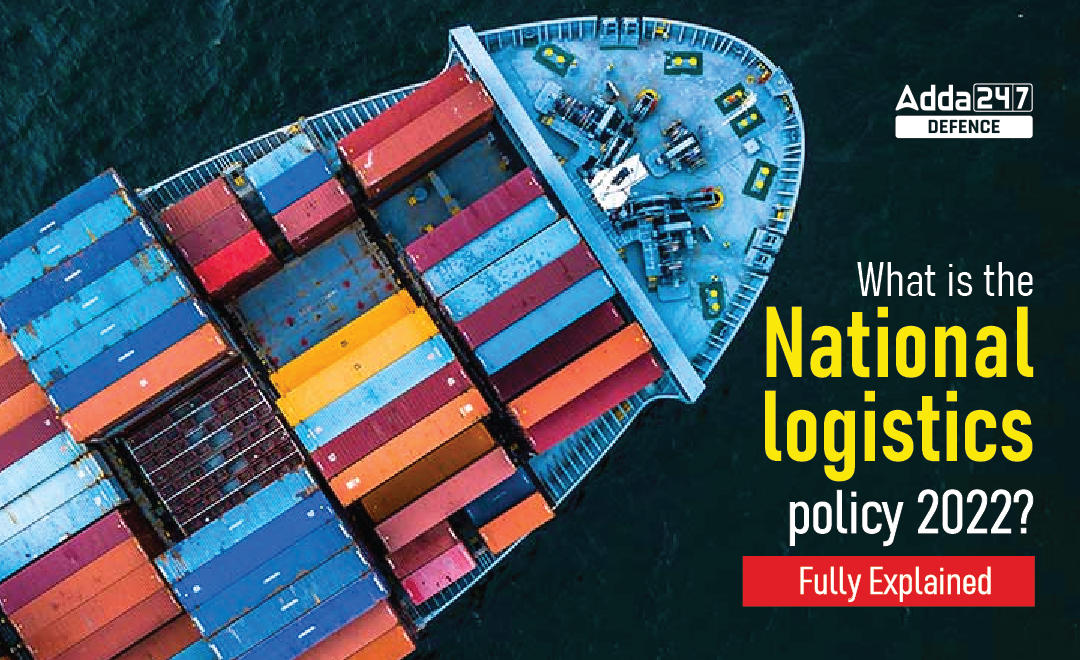National Logistics Policy
On the 17th of September, Prime Minister Narendra Modi celebrated his 72nd birthday and on this occasion along with welcoming eight cheetahs being brought from Namibia to India, he also launched National Logistics Policy.
Commerce and Industry Minister Piyush Goyal said that the main motive of the policy is to promote the seamless movement of goods and enhancing the competitiveness of the industry across the nation. It will focus on some key areas like process re-engineering, digitisation and multi-modal transport, according to The Economic Times. Addressing the members of the Board of Trade, Goyal said, “On September 17, the prime minister is going to release the country’s logistics policy.”
National Logistics Policy 2022
This policy will focus on some key areas such as process re-engineering, digitisation, and multi-modal transport. It is a crucial move as high logistics cost impacts the competitiveness of domestic goods in the international market.
“The need for a national logistics policy was felt since the logistics cost in India is high as compared to other developed economies. It is imperative to reduce the logistics cost in India for improving the competitiveness of Indian goods both in domestic as well as export markets,” an official statement stated.
Reduced logistics cost aims to improve efficiency cutting across various sectors of the economy, enabling value addition and enterprise. It said that the policy is an effort to address issues of high cost and inefficiency by laying down an overarching interdisciplinary, cross-sectoral and multi-jurisdictional framework for the development of the entire logistics ecosystem.
What is National Logistics Policy
- For the very first time, it was introduced in 2020 when Finance Minister Nirmala Sitharaman mentioned it in her Budget speech. According to the government, it is an effort to introduce an integrated and tech-enabled approach to logistics operations which will be effective in the whole process and will be helpful in reducing logistics costs in the country from the current levels of 13-14 per cent of GDP.
- With an exhaustive action plan, it was introduced with significant elements including integrated digital logistics systems; a unified logistics interface platform; ease of logistics; standardisation of physical assets and benchmarking service quality standards, state engagement, human resource development and capacity building, export-import logistics, sectoral plans for efficient logistics, and facilitation of the development of logistics parks.
- It has been an issue for the country for a long time as the logistics cost in India is high against 9-10 per cent in the US and Europe and 11 per cent in Japan and with no single body to manage the logistic sector, it becomes difficult to run the whole process smoothly. It is the responsibility of many different ministries, including road transport, shipping, railways, civil aviation, ports and commerce and industry, and finance to manage the same.
- This whole logistic chain includes more than 20 government agencies, 40 PGAs (Partner Government Agencies), 37 export promotion councils, 500 certifications, over 10,000 commodities, and USD 160 billion market size. It also involves 200 shipping agencies, 36 logistics services, 129 ICDs (Inland Container Depots), 168 CFSs (Container Freight Stations), 50 IT ecosystems, banks and insurance agencies.
- The sector provides employment to more than 22 million people and enhancing it will boost a 10 per cent decrease in indirect logistics cost leading to the growth of 5 to 8 per cent in exports, as per the statement of the ministry. As per estimates, the worth of Indian logistics market is over $200 billion.
4 Major Steps Under National Logistics Policy
Integration of Digital System (IDS):
- 30 different systems of seven different departments will be integrated digitally including the road transport, railway, customs, aviation, foreign trade and commerce ministries.
- It will improve shorter cargo movement.
Unified Logistics Interface Platform (ULIP):
- It will also lead to smooth cargo movement.
Ease of Logistics (ELOG):
- A new policy will be implemented to simplify the rules and ease the logistics business.
System Improvement Group (SIG):
- monitoring all logistics-related projects regularly and tackling all obstacles.
Further, the policy aim to develop skills among youth and create employment opportunities.



 IND–INDO CORPAT Exercise 2024
IND–INDO CORPAT Exercise 2024
 Major Dhyan Chand Khel Ratna Award Winne...
Major Dhyan Chand Khel Ratna Award Winne...
 Armed Forces Flag Day 2023: History and ...
Armed Forces Flag Day 2023: History and ...
